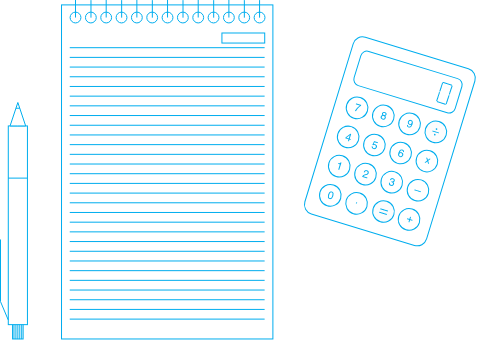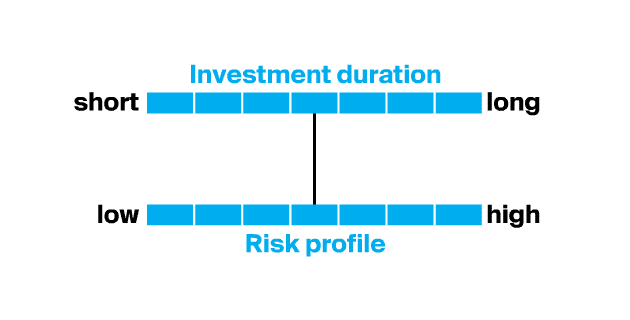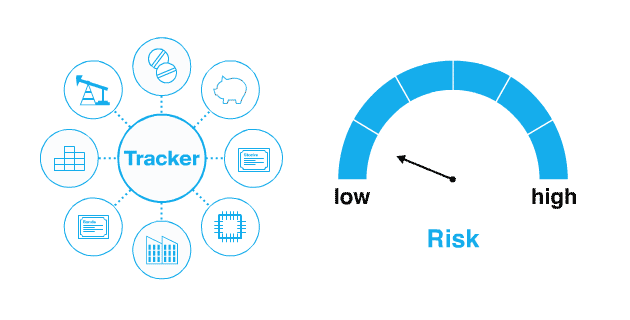10 What’s your plan?
Text version

Start by thinking ahead
Now that we have discussed the basics of investing, one last thing to consider is your investment plan. By setting goals, and making it clear for how long you will invest, you can better estimate how much risk is justified. Making an investment plan helps with this.
Investment goals
A good first step is to determine your investment goals. Some, such as the future education of children, are quite specific. But you can also invest with your retirement in mind, or just to try and achieve a higher rate of return than your savings account is offering.
Then you can consider how long you will keep your money invested. Can you afford to not touch your investments for 20 years, or do you need to be able to get it back in the short-term? This time frame will also impact the risk level. As a general rule of thumb, the sooner you expect to need the money again, the less risk you should take on in your investments. This is because you will have less time to recover from any losses.

Therefore, the important considerations are your goals, investment horizon, and risk profile. Note that with investing, risk and return are inseparably linked. The greater the return you are looking to achieve, the higher the degree of risk you have to take. Therefore, if you set an ambitious goal for your returns, you must accept that the risk involved will also be higher.
Building a portfolio
So how you will shape your portfolio, is based on your personal situation and preference. A more risk averse portfolio could rely heavier on less volatile products, such as bonds from stable countries. And those seeking a higher rate of return, could focus more on stocks, trackers and bonds with a higher risk. Of course, you can also implement a more balanced approach, and supplement low risk products with higher risk ones.

As discussed in the previous lessons, risk can be lowered when your investments are diversified. And it helps to also aware that there can be major differences in risk within a product class. Bonds from stable countries typically have low returns, but also low risk. The opposite is often seen with bonds from companies or less stable countries. This can also be seen with trackers. One that follows the largest 500 stocks in the world, could help you diversify your portfolio. But a tracker that follows a certain commodity, can lead to extra fluctuation and risk. Of course, not all stocks have the same risk level either. A large, established firm may be a more stable investment than a new start-up, though the latter may offer the chance to grow at a much faster rate.
Re-evaluate
When your portfolio is created, you can keep monitoring your results over time. Here, you can check if the distribution of products in your portfolio remains in line with your investment goals, and also re-evaluate if your personal situation has changed.
With a personalized investment plan and the basic principles that you’ve learned from these lessons, you will be better prepared to start investing via ESKIMO.
For any questions you can always contact our Service Desk. We will be happy to help.
Last Lesson
Start investing today.
Start investing today.
- Incredibly low fees.
- Comprehensive tools, capabilities, and service.
- Worldwide. Anytime and anywhere.
- Secure structure.